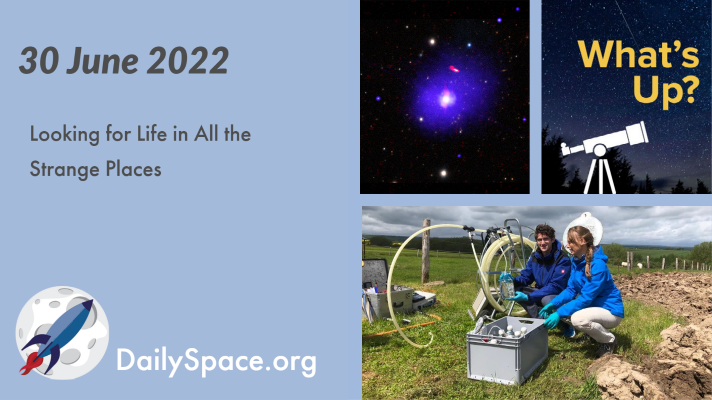
Jul 1, 2022 | Astrobiology, Daily Space, Earth, Europa, Mars, Quasar, Sky Watching, Spacecraft, SpaceX, Stars, Supermassive Black Holes
A trio of stories examines the possibilities for finding life in strange, new places, including deep underground here on Earth, in the subsurface oceans of Europa, and fossilized within sedimentary rocks on Mars. Plus, a SpaceX launch, gamma-ray bursts, and this week’s What’s Up.
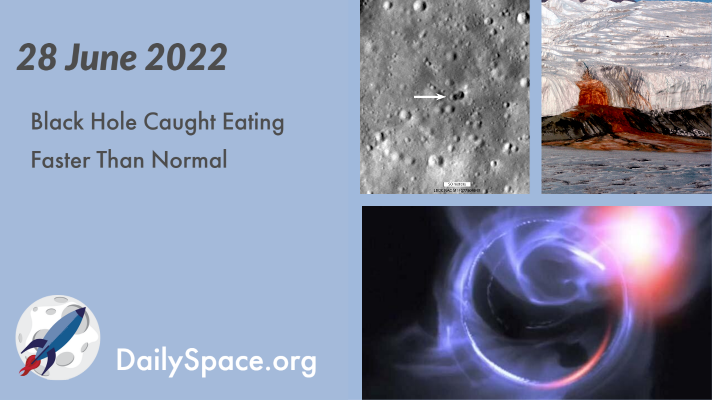
Jun 29, 2022 | Astrobiology, Daily Space, Earth, JWST, Mars, Milky Way, Rockets, Space China, Spacecraft, Supermassive Black Holes
With a little bit of luck and a lot of time on different telescopes, researchers managed to capture the black hole in the center of the Milky Way, SgrA*, consuming matter at a faster rate than usual. Plus, Australia launches a rocket, a couple of Mars stories, and strange glaciers on Earth.
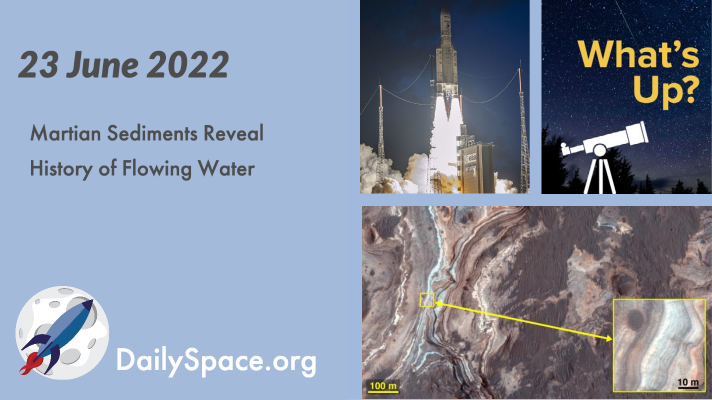
Jun 24, 2022 | Climate Change, Cosmology, Curiosity, Daily Space, ESA, Galaxies, Mars, Neptune, Physics, Rockets, Sky Watching, Spacecraft
A basin region within Margaritifer Terra on Mars contains deposits of clay-bearing sediment that provide evidence of flowing water on the red planet as recently as 2.5 billion years ago. Plus, Mars mission updates, gravitational wave detection, rocket launches, and this week’s What’s Up.
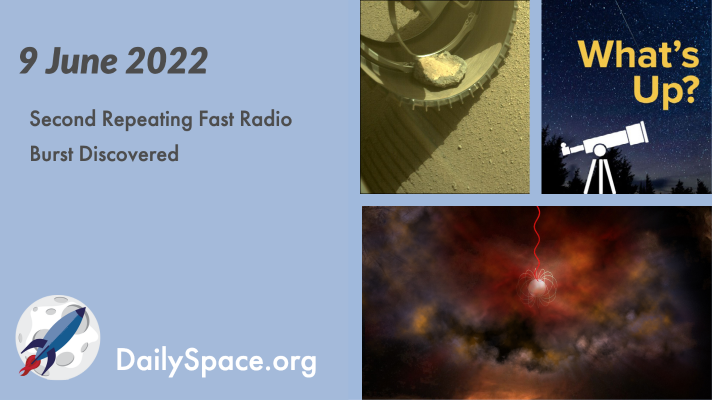
Jun 10, 2022 | Daily Space, Fast Radio Bursts, JWST, Mars, Neutron Stars / Pulsars, Perseverance, Rockets, Sky Watching, Space Policy, Spacecraft, SpaceX, Starlink
A second repeating fast radio burst was detected in 2019 by China’s FAST observatory and confirmed in 2020 by the Very Large Array. This latest discovery raises the possibility that there are two different types of FRBs. Plus, a SpaceX commercial launch, mission updates, neutron stars, and this week’s What’s Up.
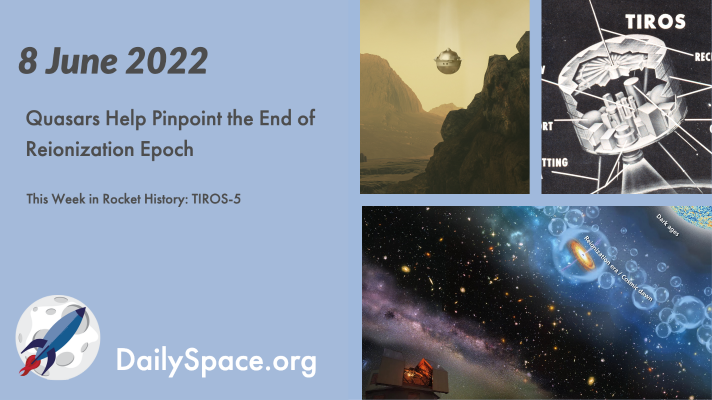
Jun 9, 2022 | Cosmology, Daily Space, Earth, Galaxies, JWST, Mars, Space History, Spacecraft, Venus
Using the radiation signatures of quasars, scientists have determined when the era of reionization ended in our universe – about 1.1 billion years after the Big Bang. Plus, an update on NASA’s MAVEN spacecraft, new Hubble and Chandra images, and This Week in Rocket History is the TIROS-5 weather satellite.
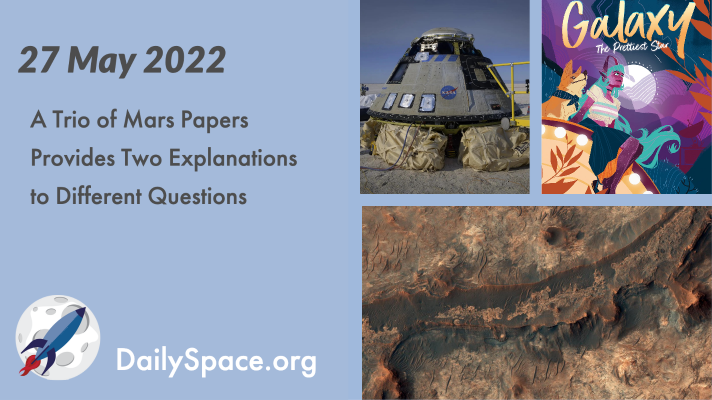
May 31, 2022 | Crewed Space, Daily Space, Earth, ESA, Mars, Perseverance, Review, Rockets, The Sun
Today, we take a look at three recent papers attempting to explain various phenomena on Mars. One uncovers the cause of discrete aurorae. Another explains the martian haze. And a third actually ends up with more questions than answers. Plus, Boeing’s OFT-2 returns to Earth, ESA’s Solar Orbiter makes its closest approach, and Dr. Pamela reviews the new graphic novel “Galaxy: The Prettiest Star” by Jadzia Axelrod.








 We record most shows live, on Twitch. Follow us today to get alerts when we go live.
We record most shows live, on Twitch. Follow us today to get alerts when we go live.